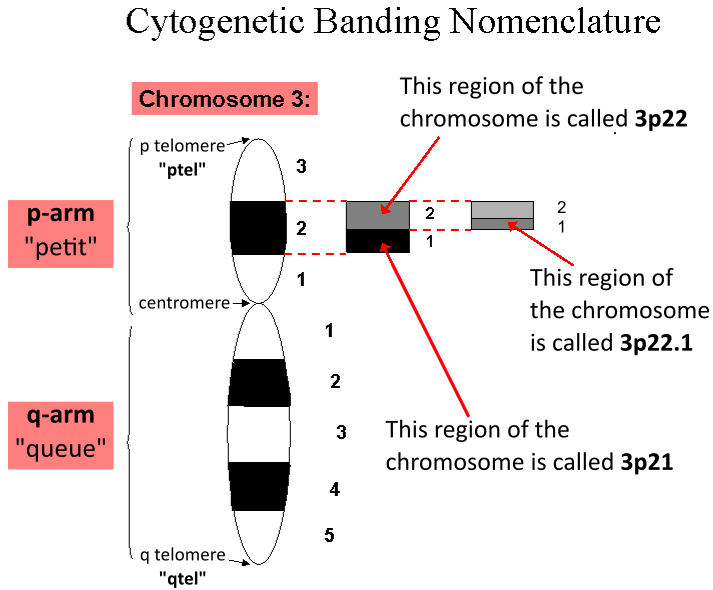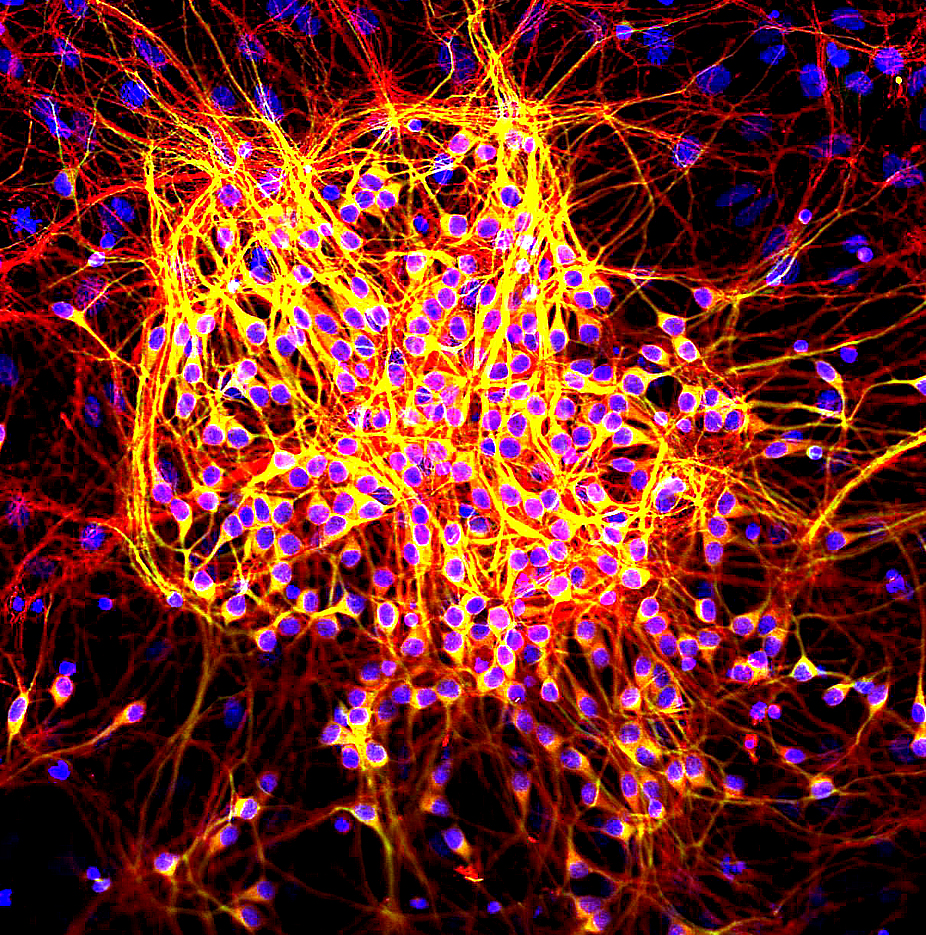|
Frontotemporal Dementia And Parkinsonism Linked To Chromosome 17
Frontotemporal dementia and parkinsonism linked to chromosome 17 (FTDP-17) is an autosomal dominant neurodegenerative tauopathy and Parkinson plus syndrome. FTDP-17 is caused by mutations in the MAPT (microtubule associated protein tau) gene located on the q arm of chromosome 17, and has three cardinal features: behavioral and personality changes, cognitive impairment, and motor symptoms. FTDP-17 was defined during the ''International Consensus Conference in Ann Arbor'', Michigan, in 1996. Signs and symptoms FTDP-17 usually appears gradually. Individuals who have reached the fully developed stage of the disease exhibit an array of symptoms that include at least two of the three cardinal features of FTDP-17, which include behavioral and personality disturbances, cognitive deficits, and motor dysfunction. FTDP-17 clinical features differ significantly among affected individuals, regardless of whether they inherit the same or distinct mutations. Even members of the same family ... [...More Info...] [...Related Items...] OR: [Wikipedia] [Google] [Baidu] |
Autosomal Dominant
In genetics, dominance is the phenomenon of one variant (allele) of a gene on a chromosome masking or overriding the Phenotype, effect of a different variant of the same gene on Homologous chromosome, the other copy of the chromosome. The first variant is termed dominant and the second is called recessive. This state of having Heterozygosity, two different variants of the same gene on each chromosome is originally caused by a mutation in one of the genes, either new (''de novo'') or Heredity, inherited. The terms autosomal dominant or autosomal recessive are used to describe gene variants on non-sex chromosomes (autosomes) and their associated traits, while those on sex chromosomes (allosomes) are termed X-linked dominant, X-linked recessive or Y-linked; these have an inheritance and presentation pattern that depends on the sex of both the parent and the child (see Sex linkage). Since there is only one Y chromosome, Y-linked traits cannot be dominant or recessive. Additionally, ... [...More Info...] [...Related Items...] OR: [Wikipedia] [Google] [Baidu] |
Dementia With Lewy Bodies
Dementia with Lewy bodies (DLB) is a type of dementia characterized by changes in sleep, behavior change (individual), behavior, cognition, movement, and dysautonomia, regulation of automatic bodily functions. Unlike some other dementias, memory loss may not be an early symptom. The disease progressive disease, worsens over time and is usually diagnosed when cognitive impairment interferes with activities of daily living, normal daily functioning. Together with Parkinson's disease dementia, DLB is one of the two Lewy body dementias. It is a common form of dementia, but the prevalence is not known accurately and many diagnoses are missed. The disease was first described on autopsy by Kenji Kosaka (psychiatrist), Kenji Kosaka in 1976, and he named the condition several years later. REM sleep behavior disorder (RBD)—in which people lose the muscle paralysis (atonia) that normally occurs during Rapid eye movement sleep, REM sleep and act out their dreams—is a core feature. RBD ... [...More Info...] [...Related Items...] OR: [Wikipedia] [Google] [Baidu] |
Compulsive Behavior
Compulsive behavior (or compulsion) is defined as performing an action persistently and repetitively. Compulsive behaviors could be an attempt to make obsessions go away. Compulsive behaviors are a need to reduce apprehension caused by internal feelings a person wants to abstain from or control. A major cause of compulsive behavior is obsessive–compulsive disorder (OCD).(1996). Obsessive Compulsive Disorder: Decade of the Brain. National Institutes of Health. "Compulsive behavior is when someone keeps doing the same action because they feel like they have to, even though they know these actions do not align with their goals." There are many different types of compulsive behaviors including Compulsive buying disorder, shopping, hoarding, Compulsive overeating, eating, Problem gambling, gambling, trichotillomania and Dermatillomania, picking skin, itching, Obsessive–compulsive disorder, checking, Arithmomania, counting, washing, Hypersexuality, sex, and more. Also, there are cul ... [...More Info...] [...Related Items...] OR: [Wikipedia] [Google] [Baidu] |
Apathy
Apathy, also referred to as indifference, is a lack of feeling, emotion, interest, or concern about something. It is a state of indifference, or the suppression of emotions such as concern, excitement, motivation, or passion. An apathetic individual has an absence of interest in or concern about emotional, social, spiritual, philosophical, virtual, or physical life and the world. Apathy can also be defined as a person's lack of goal orientation. Apathy falls in the less extreme spectrum of diminished motivation, with abulia in the middle and akinetic mutism being more extreme than both apathy and abulia.Marin, R. S., & Wilkosz, P. A. (2005)Disorders of diminished motivation. Journal of Head Trauma Rehabilitation, 20(4), 377-388. The apathetic may lack a sense of purpose, worth, or meaning in their life. People with severe apathy tend to have a lower quality of life and are at a higher risk for mortality and early institutionalization. They may also exhibit insensibility ... [...More Info...] [...Related Items...] OR: [Wikipedia] [Google] [Baidu] |
Disinhibition
Disinhibition, also referred to as behavioral disinhibition, is medically recognized as an orientation towards immediate gratification, leading to impulsive behaviour driven by current thoughts, feelings, and external stimuli, without regard for past learning or consideration for future consequences. It is one of five pathological personality trait domains in certain psychiatric disorders. In psychology, it is defined as a lack of restraint manifested in disregard of social conventions, impulsivity, and poor risk assessment. Hypersexuality, hyperphagia, substance abuse, money mismanagement, frequent faux pas, and aggressive outbursts are indicative of disinhibited instinctual drives. Certain psychoactive substances that have effects on the limbic system of the brain may induce disinhibition. Clinical concept Disinhibition in psychology is defined as a lack of inhibitory control manifested in several ways, affecting motor, instinctual, emotional, cognitive, and perce ... [...More Info...] [...Related Items...] OR: [Wikipedia] [Google] [Baidu] |
Cognitive Impairment
Cognitive impairment is an inclusive term to describe any characteristic that acts as a barrier to the cognition process or different areas of cognition. Cognition, also known as cognitive function, refers to the mental processes of how a person gains knowledge, uses existing knowledge, and understands things that are happening around them using their thoughts and senses. Cognitive impairment can be in different domains or aspects of a person's cognitive function including memory, attention span, planning, reasoning, decision-making, language (comprehension, writing, speech), executive functioning, and visuospatial functioning. The term cognitive impairment covers many different diseases and conditions and may also be symptom or manifestation of a different underlying condition. Examples include impairments in overall intelligence (as with intellectual disabilities), specific and restricted impairments in cognitive abilities (such as in learning disorders like dyslexia), neurops ... [...More Info...] [...Related Items...] OR: [Wikipedia] [Google] [Baidu] |
Chromosome 17
Chromosome 17 is one of the 23 pairs of chromosomes in humans. People normally have two copies of this chromosome. Chromosome 17 spans more than 84 million base pairs (the building material of DNA) and represents between 2.5 and 3% of the total DNA in cells. Chromosome 17 contains the Homeobox B gene cluster. Genes Number of genes The following are some of the gene count estimates of human chromosome 17. Because researchers use different approaches to genome annotation their predictions of the number of genes on each chromosome varies (for technical details, see gene prediction). The most conservative estimate, from CCDS, represents a lower bound on the total number of human protein-coding genes. Gene list The following is a partial list of genes on human chromosome 17. For complete list, see the link in the infobox on the right. The following are some of the genes and their corresponding Cytogenetic location on chromosome 17: p-arm q-arm Diseases and disord ... [...More Info...] [...Related Items...] OR: [Wikipedia] [Google] [Baidu] |
Q Arm
In genetics, a locus (: loci) is a specific, fixed position on a chromosome where a particular gene or genetic marker is located. Each chromosome carries many genes, with each gene occupying a different position or locus; in humans, the total number of protein-coding genes in a complete haploid set of 23 chromosomes is estimated at 19,000–20,000. Genes may possess multiple variants known as alleles, and an allele may also be said to reside at a particular locus. Diploid and polyploid cells whose chromosomes have the same allele at a given locus are called homozygous with respect to that locus, while those that have different alleles at a given locus are called heterozygous. The ordered list of loci known for a particular genome is called a gene map. Gene mapping is the process of determining the specific locus or loci responsible for producing a particular phenotype or biological trait. Association mapping, also known as "linkage disequilibrium mapping", is a method of mapping ... [...More Info...] [...Related Items...] OR: [Wikipedia] [Google] [Baidu] |
Tau Protein
The tau proteins (abbreviated from tubulin associated unit) form a group of six highly soluble protein isoforms produced by alternative splicing from the gene ''MAPT'' (microtubule-associated protein tau). They have roles primarily in maintaining the stability of microtubules in axons and are abundant in the neurons of the central nervous system (CNS), where the cerebral cortex has the highest abundance. They are less common elsewhere but are also expressed at very low levels in CNS astrocytes and oligodendrocytes. Pathologies and dementias of the nervous system such as Alzheimer's disease and Parkinson's disease are associated with tau proteins that have become hyperphosphorylated insoluble aggregates called neurofibrillary tangles. The tau proteins were identified in 1975 as heat-stable proteins essential for microtubule assembly, and since then they have been characterized as intrinsically disordered proteins. Function Microtubule stabilization Tau proteins are found m ... [...More Info...] [...Related Items...] OR: [Wikipedia] [Google] [Baidu] |
Parkinson Plus Syndrome
Parkinson-plus syndromes (PPS) are a group of neurodegenerative diseases featuring the classical features of Parkinson's disease (tremor, rigidity (neurology), rigidity, akinesia/bradykinesia, and postural instability) with additional features that distinguish them from simple idiopathic Parkinson's disease (PD). Parkinson-plus syndromes are either inherited genetically or occur Sporadic disease, sporadically. Atypical parkinsonism and other Parkinson-plus syndromes are often difficult to differentiate from PD and each other. They include multiple system atrophy (MSA), progressive supranuclear palsy (PSP), and corticobasal degeneration (CBD). Dementia with Lewy bodies (DLB), may or may not be part of the PD spectrum, but it is increasingly recognized as the second-most common type of neurodegenerative dementia after Alzheimer's disease. These disorders are currently lumped into two groups, the synucleinopathies and the tauopathies. They may coexist with other pathologies. Addition ... [...More Info...] [...Related Items...] OR: [Wikipedia] [Google] [Baidu] |
Tauopathy
Tauopathies are a class of neurodegenerative diseases characterized by the aggregation of abnormal tau protein. Hyperphosphorylation of tau proteins causes them to dissociate from microtubules and form insoluble aggregates called neurofibrillary tangles. Various neuropathologic phenotypes have been described based on the anatomical regions and cell types involved as well as the unique tau isoforms making up these deposits. The designation 'primary tauopathy' is assigned to disorders where the predominant feature is the deposition of tau protein. Alternatively, diseases exhibiting tau pathologies attributed to different and varied underlying causes are termed 'secondary tauopathies'. Some neuropathologic phenotypes involving tau protein are Alzheimer's disease, frontotemporal dementia, progressive supranuclear palsy, and corticobasal degeneration. Tau protein Tau protein, also called tubulin associated unit or microtubule-associated protein tau (MAPT), is a microtubule-associate ... [...More Info...] [...Related Items...] OR: [Wikipedia] [Google] [Baidu] |



